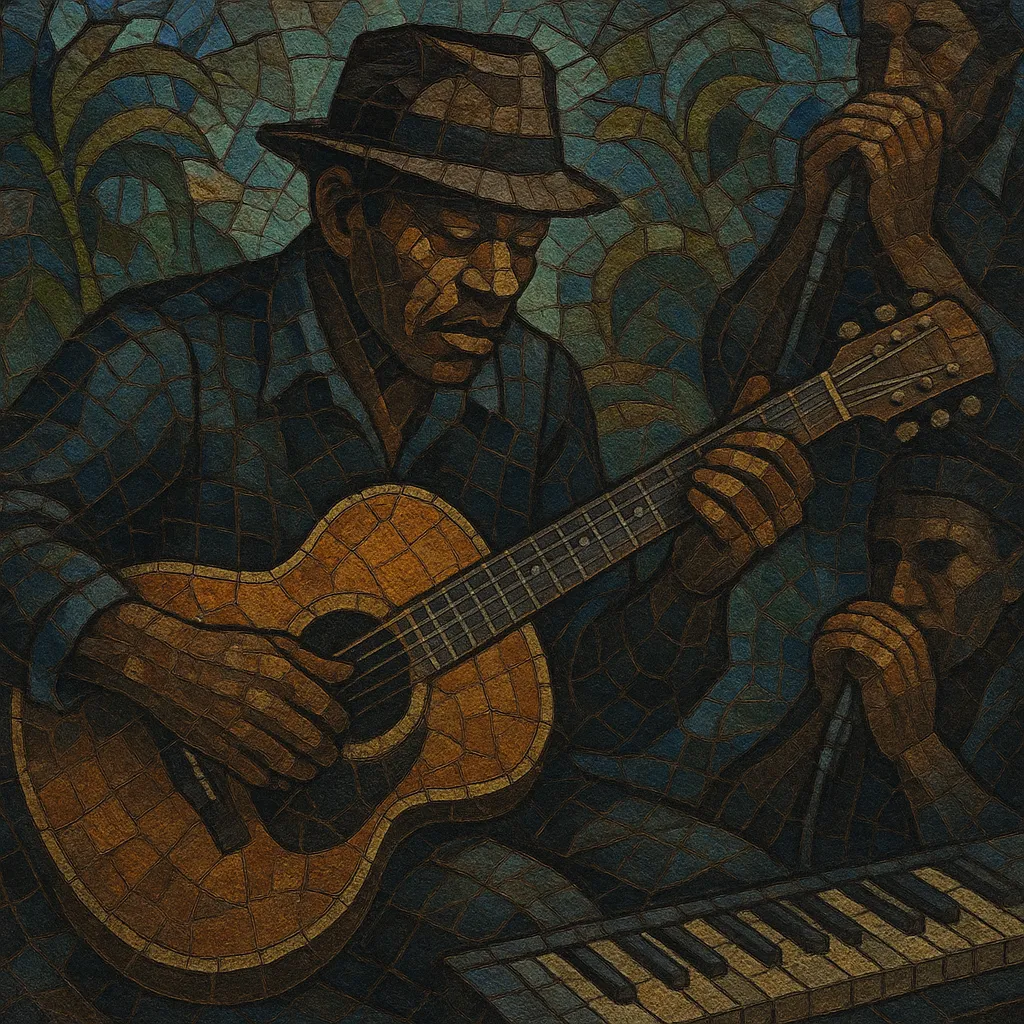
Louisiana blues is a regional blues style rooted in the musical cultures of New Orleans, Baton Rouge, and the bayou country. It blends traditional country and Delta blues guitar with the rolling, syncopated grooves of New Orleans R&B, touches of Cajun rhythm, and a humid, "swampy" ambience.
Typical features include relaxed mid-tempos, loping shuffle or second-line-inflected beats, reverb- and tremolo-soaked electric guitar tones, amplified harmonica, and spare, conversational vocals. Piano-driven variants in New Orleans add Caribbean and jazz flavors, while the Baton Rouge "swamp blues" sound—popularized by Excello Records—favors laconic vocals, hypnotic riffs, and echo-laden production.
Lyrically, Louisiana blues often evokes bayou imagery, late-night bars, heat and rain, heartbreak, and everyday resilience, all delivered with an unhurried, soulful understatement.
Louisiana blues took shape in the 1940s as local musicians fused country and Delta blues with the rhythmic sensibilities of New Orleans, where jazz, swing, and Caribbean currents had circulated for decades. Piano-oriented club bands and street-parade traditions (second line) fed a distinctive rhythmic bounce that set the region apart from other blues centers.
After World War II, studios in Baton Rouge and Crowley nurtured a laconic, hypnotic strain known as "swamp blues". Producer J. D. Miller recorded artists for Excello Records whose lightly amplified guitars, amplified harmonicas, and slapback echo created a humid, drifting aura. Slim Harpo, Lightnin' Slim, Lazy Lester, Lonesome Sundown, Silas Hogan, and Tabby Thomas defined the sound with relaxed grooves, economical riffs, and conversational vocals.
In New Orleans, piano-driven blues overlapped with burgeoning R&B. Figures like Professor Longhair, Guitar Slim, Earl King, and later Dr. John blended blues harmony with second-line rhythms, Afro-Caribbean accents, and horn arrangements. This strand fed directly into early rock and roll and shaped the broader identity of Louisiana blues as both earthy and urbane.
By the late 1960s and 1970s, Louisiana blues resonated far beyond the state. British and American rock musicians drew on its relaxed swing and guitar tones, while regional hybrids such as swamp pop and swamp rock made its bayou aesthetic explicit. The style remains a living tradition in Louisiana clubs and festivals, sustained by family lineages (e.g., the Neal family) and a continuing taste for unhurried, groove-centered blues.

